Project work provides an opportunity to trial and refine new working methods. It is an essential element of knowledge work. All the more important, therefore, to establish the right foundations.
Project work can foster initiative and personal responsibility – provided employees are trusted with responsibility and given the backing they need. Self-organisation then becomes second nature, reducing the burden on managers.
A Challenge for Managers
For project work to succeed, it needs both a clear framework and a high degree of freedom – to allow for initiative, accountability, creative problem-solving and entrepreneurial thinking to flourish. The role of management is therefore less about defining objectives and more about supporting teams, for example by providing the necessary resources.
Leadership thus becomes the task of shaping change. For many organisations, this is a painful learning process, as they need capabilities for this role that are often lacking.
Prof. Dr Heiko Roehl, co-editor of the Journal of Organisational Development (ZOE) and Managing Partner of Kessel und Kessel GmbH, quotation taken from New Work Order Study – Organisations in Transition.
Digital Networking
In most projects, communication and teamwork take centre stage. Digital collaboration platforms such as Zoom or Teams enable rapid exchange. They are ideal for sharing information and quick coordination. At the same time, these tools support documentation and summarisation of projects. With integrated workshop modules, they also aid idea generation. Nevertheless, collaboration via digital platforms still comes with limitations, at least for now. Typically, only a small visual section is transmitted on a static screen. Important non-verbal cues are lost, and creativity-enhancing actions such as moving around the room or changing physical positions are significantly hindered.
Project Spaces
Project work, therefore, cannot function entirely without face-to-face meetings. Personal contact cannot (yet) be replaced by digital meetings. Suitable spaces must be available for this purpose, and conventional meeting and conference rooms are rarely suitable.
EXAMPLE: CONVERSION OF EXISTING ROOMS
In the following example, two rooms were combined. A smaller meeting room was retained separately from the project space.
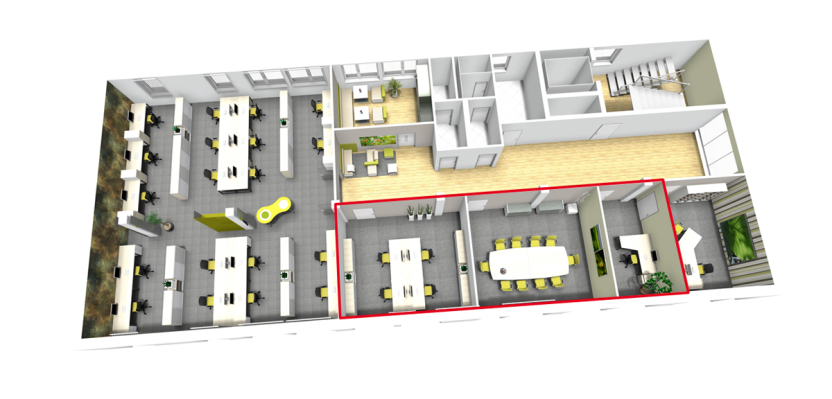
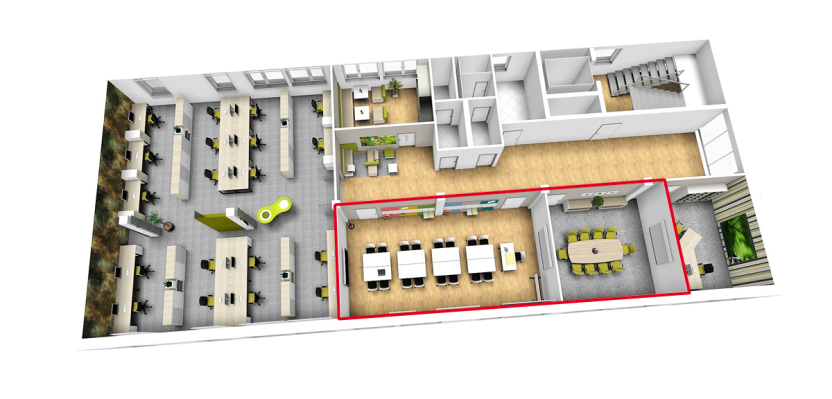
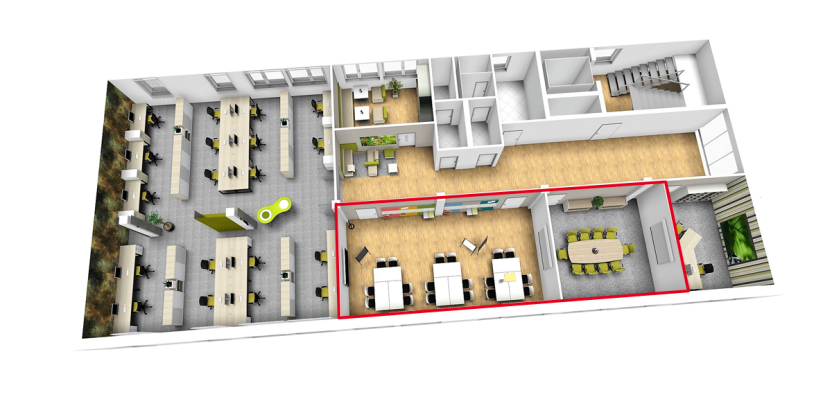
REQUIREMENTS FOR PROJECT SPACES
- Like a workshop, project spaces should invite experimentation and creativity. They should not be designed to look too perfect.
- Project spaces must support different modes of use.
- The furnishings should encourage movement. Fixed seating arrangements are rarely conducive to creativity and are therefore often unsuitable for project work. Variety can be created through, for example, small islands with high tables and counter stools, or seating areas.
- Project spaces should be equipped with tools for experimenting and visualising. Prototyping tools can also be valuable – from modelling clay to Lego bricks to a 3D printer.
- Project spaces should be easily accessible but also well shielded. Confidentiality is important, and during a project there should be the option to leave documents and materials out when needed.
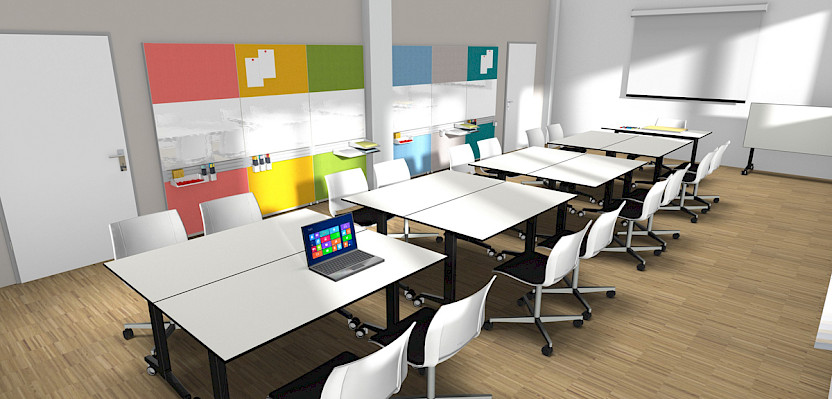
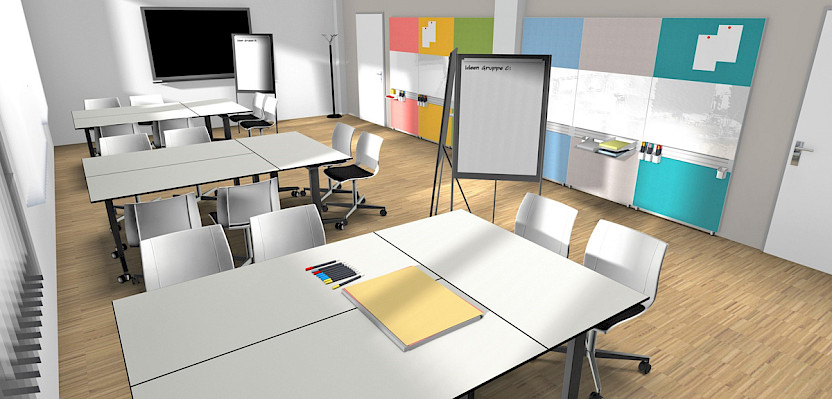
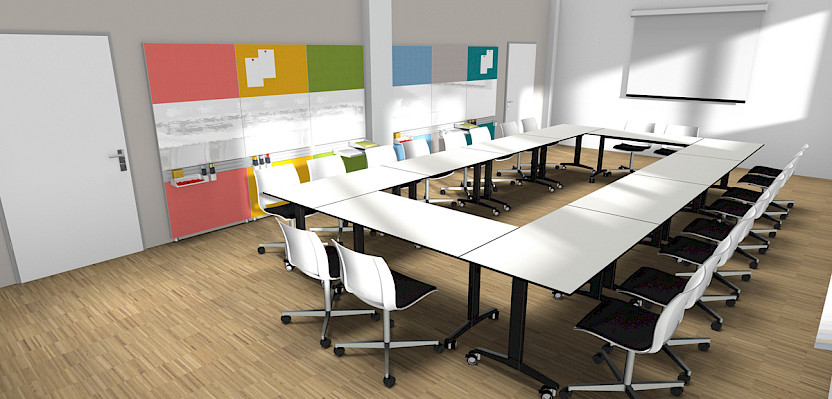
If suitable spaces cannot be created in-house, rooms in a co-working centre can be booked instead.
Examples of project space furnishings can be found in the Co-Area Showrooms in the IBA Forum, for instance at VS.





